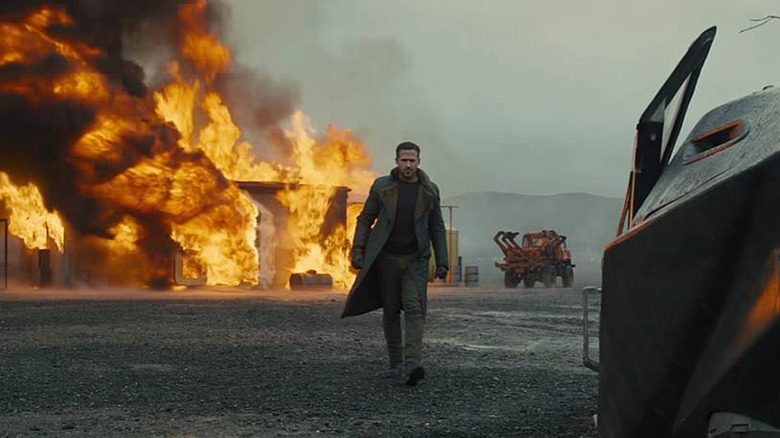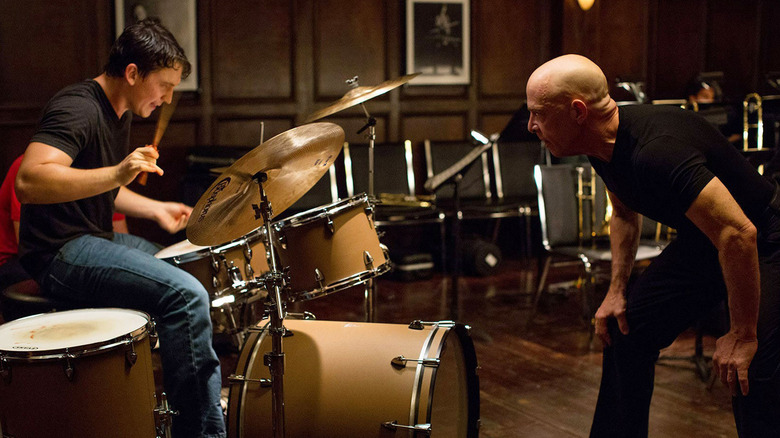The Experience You Didn't Know You Were Losing By Streaming Movies
The advent of streaming movies and TV has given audiences more entertainment choices than ever. All of that choice is nice, but the streaming experience is still far from perfect — especially when it comes to audio.
We've all had the experience of streaming a movie and having to constantly adjust the volume depending on what's happening. When two people are talking, you have to turn it up so you can hear them. When there's a gunfight, a car chase, or a musical interlude, you have to turn it down to avoid rupturing your ear drums. Often, watching a movie via streaming means having to ride the volume button the entire time. That's probably not what the filmmakers intended.
If you've ever suspected that the audio for streaming movies just isn't the same as it is for the theatrical version, you're not alone. Recently, Ben Pearson of SlashFilm spoke to several professional sound mixers and designers, and they agreed that when it comes to home streaming and audio, something gets lost in translation. There are many reasons why movie audio can get wonky, but here are the two biggest factors specific to streaming.
Converting movies for home viewing is inherently difficult
One of the biggest challenges is the age-old problem of translating a movie from theatrical viewing to home viewing. Movie theaters often have numerous speakers that provide surround sound, but home viewing in stereo often only has two speakers available.
Filmmakers usually compensate for this by creating a separate "stereo mix" that funnels the theatrical mix through two stereo outputs. Sound editor Donald Sylvester ("Ford v Ferrari") compares this process to "taking a beautiful steak and dragging it through the dirt."
Furthermore, TV's often have their own specs that alter a movie's audio. "Some TVs take the 5.1 [surround sound mix] and they turn it into a stereo. They have algorithms inside the TV. It's not even our mix. We don't even know what it sounds like," Sylvester explains. "I think a lot of tuners do that, if you have a receiver — I know they have algorithms, and they also put coloring on it, like 'cinema approach' that adds reflection and noise and stuff that you don't want in the mix. That's another problem. You don't know how it's being presented in the home" (via SlashFilm).
However, the age of streaming has ushered in a whole new set of problems when it comes to movie audio.
When it comes to streaming, file compression affects how movies sound
When you stream a movie at home, the streaming provider has to compress the movie file to a smaller size in order to efficiently transport it over the Internet. Unlike the sound on a Blu-ray, for example, these compressed audio files are inherently lower quality.
"On Blu-ray, if you select 7.1, that is our full fidelity, 48 kilohertz, 24-bit master audio, just as it came from the mixing studio," explains sound designer Mark Mangini ("Mad Max: Fury Road," "Bladerunner 2049"). You can get that on a Blu-ray, and you can get that on certain premium platforms. I think you have to pay extra money for that. But otherwise, it's most common that when you stream, you get a degraded version of what you mix that even we didn't approve. It's done after the fact, after we ship the masters. The only way [streamers] can get the bandwidth they need for you to see image and sound in sync is to compress everything."
Filmmakers often try to compensate for this by creating a separate mix for the streaming audience — but streaming platforms don't have a unified set of specifications for audio mixing.
According to sound mixer Craig Mann ("Whiplash"), Netflix has the best specs for streaming audio. "They need a particular level in order to pass quality control, and the level is essentially based on the dialogue level throughout the length of the program," Mann says. (via SlashFilm).
Other streaming platforms have entirely different specs, and since post production departments don't always know where their movie will end up, in some cases it's impossible to know exactly how the audio should be mixed.
It's time for streaming platforms for have one standard for audio
With all of these problems in mind, the next question is how to fix them. Obviously, if streaming platforms like Netflix, Hulu, and Amazon Prime agreed to one set of audio specifications, filmmakers would have an easier time creating an audio mix just for streaming.
However, the sound professionals Pearson spoke to all agreed that the film industry can do a better job of understanding and respecting sound. Mark Mangini thinks that sound designers themselves can up their game, too. "We can do better in post in terms of how we manage those mixes that are designed specifically for a non-pristine sound environment," Mark Mangini says. "I would argue that we're probably not doing a good enough job with those mixes, and part of it might be that the individuals who are working in those mixes probably have a really super duper sound system at home and they're not fully aware of how compromised the home environment can be" (SlashFilm).
Clearly, a lot can be done to optimize audio for home streaming. Until then, keep your remote handy.



